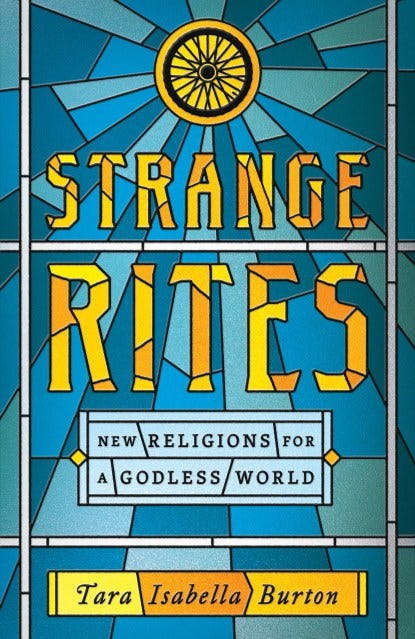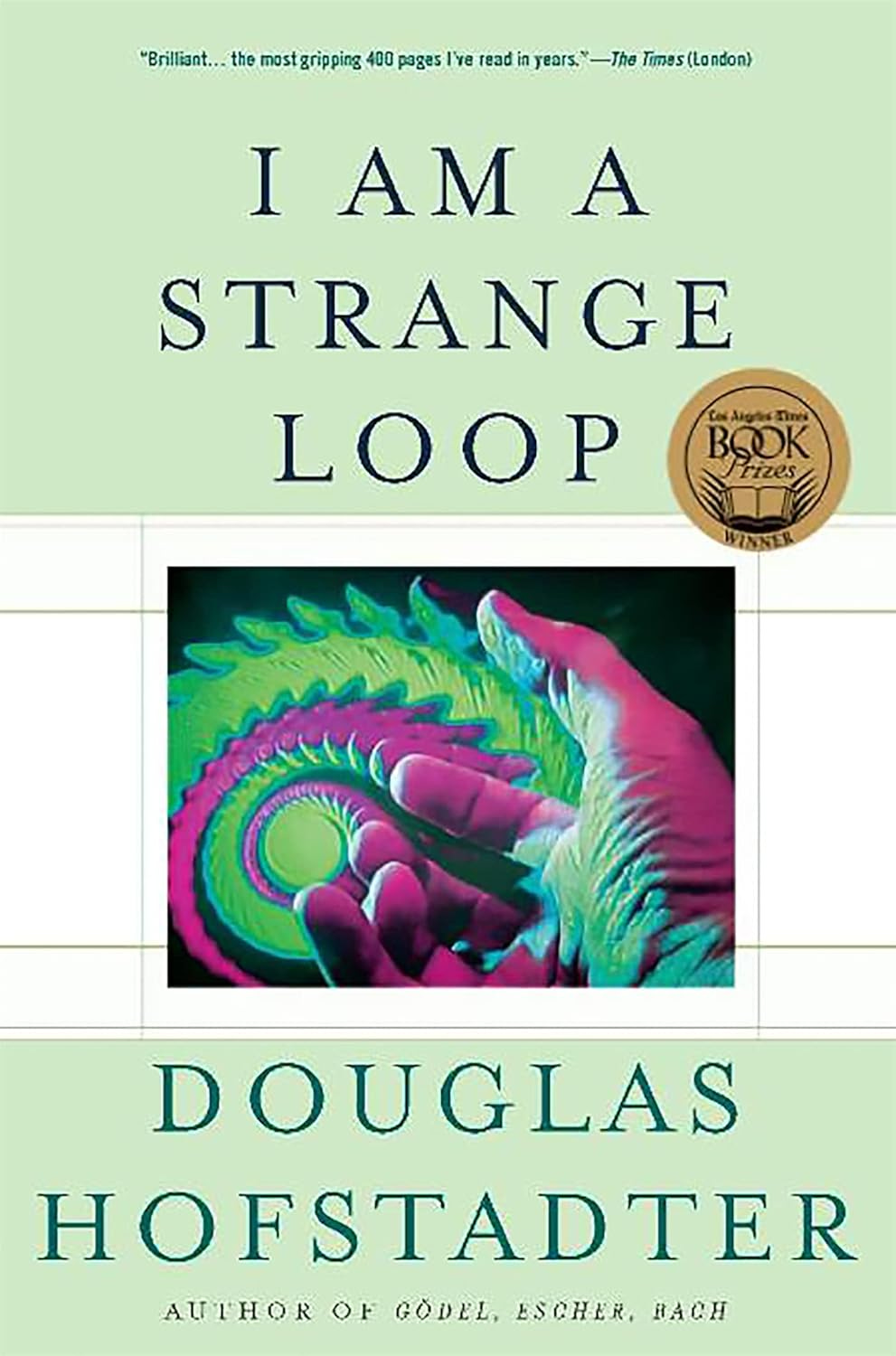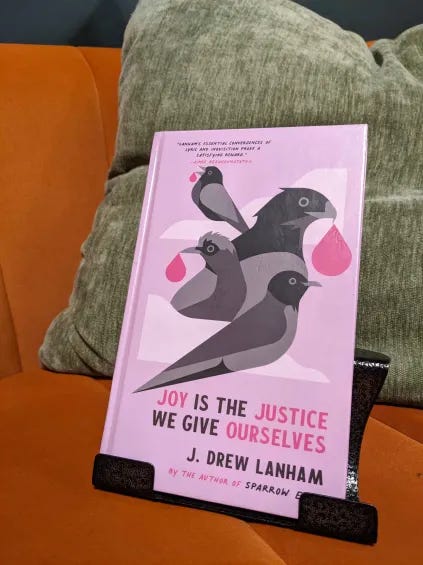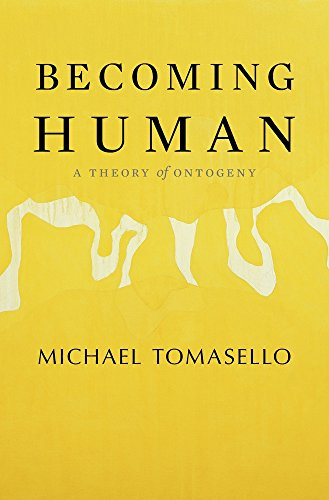Books have a multitude of purposes. They can delight or challenge us, bear witness to the truths of the author’s life or imagine fantastical ways of being. Some are narrowly practical, offering guidance toward a particular goal: finding love, making money, living with yourself.
A few books gesture toward what meaning lies in or just over the horizon of this material world. The books listed below are those that respect both the critical mind and the generous heart. They have shifted my perspective the way that turning a gem allows new sparks of radiance to blaze forth.
The Hidden Life of Trees by Peter Wohlleben
Wohlleben’s last name means “living well.” His book, a meditation on the lessons learned from decades of study and forestry management in Germany, presents trees as our neighbors. It asks us to consider what it means to live well alongside them.
Each chapter is a rich mulch of firsthand experience, scientific knowledge, and personal reflection. At the beginning of his career, Wohlleben had a human-centric viewpoint. The forest existed to provide raw material for human consumption. Trees rank closer to objects than living creatures. As he journeyed into the forest with observant eyes and an open heart, the revelations of the wood reconfigured his perspective.
The dynamic, communal life of the forest is difficult for humans to perceive at a glance, because our lifespans are so different. But once you have adjusted your scale to perceive the processes of years and decades, the biographies of the trees emerge, rivalling human legends. The forest becomes a place of tender friendships, brutal confrontation, and heroic perseverance. Once we become conscious of the ongoing interplay between humanity and our very distant cousins, we cannot remain unconcerned with their welfare. It is, after all, our own.
The Hidden Life of Trees isn’t just a folksy collection of tree facts. It can, if you let it, expand the horizons of your consciousness and the sphere of your concern. It will transform your perhaps hitherto mundane walk in the woods into something mysterious and wonderful. It humanizes trees in a way I don’t always fully accept, but am nonetheless tantalized by.
Passages from The Hidden Life of Trees were featured this year in my article “Be As Tree.”
Be As Tree
Understanding requires perspective; perspective requires distance. The biggest challenge we humans face in understanding ourselves is that we’re simply too close to the subject under investigation. We are trying to stand under the microscope while also looking through the eyepiece. Stymied, we turn to an indirect approach. We look around at the rest of …
Strange Rites: New Religions for a Godless World by Tara Isabella Burton
Nietzsche’s madman proclaimed the death of God at the end of the 19th century. Reports of God’s demise were greatly exaggerated, especially in North America. The first half of the twentieth century saw a revival of organized religion, especially Protestant Christianity. But then the 60s counter-culture and the 70s new age movement nipped at the establishment. By the time millennials were reaching adulthood, cultural commentators were banging the drum about the rise of “nones,” people who claimed no religious affiliation.
Tara Isabella Burton warns us not to oversimplify the situation. We aren’t seeing the death of religion, and perhaps not even a decline of spirituality. Instead, Burton tells a narrative of American society that has always been swinging between the poles of “intuitional” and “institutional” religion.
Instead of “nones”, Burton calls today’s religious seekers “remixed.” They are less likely to get all their spiritual needs met by a single institution. Instead, they mix and match from a range of options, many of which are commercially mediated.
Just as it’s possible to view churches through the frame of “big business,” there’s a burgeoning market in magic, health and wellness, and even nature-centered and eastern practices. Burton isn’t dismissive of any of these, but she views new-fashioned religion as just as susceptible to bad actors as the old-fashioned kind. She is supportive of exploration, but also concerned that intuitional religion can devolve into solipsism—everyone does what feels best and makes the least demands.
But reducing Strange Rites to its thesis does it a disservice. Burton, who has also published several novels, really shines in her descriptions of details. You may find yourself a bit bewitched by some of the religious practices she explores. In all, Strange Rites is a thoughtful and fascinating look at where we’ve been, where we are, and where we might be headed.
I am a Strange Loop by Douglas Hofstadter
This is a fascinating book to read, but not an easy one to summarize. Philosophy these days can be a narrowly-focused discipline working on specialized problems. Not so here. Hofstadter swings for the fences on one of the oldest and most difficult problems: What is “I”? What is the nature of human consciousness and identity? His answer is: “a strange loop.” Which takes a few hundred pages to explain.
I am a Strange Loop is a tour through mathematics, semiotics, and philosophy. At the heart of Hofstadter’s investigation is a certain recursive pattern. Or, as he likes to call it, loopiness. Can a loop be kickstarted in such a way that it becomes self-sustaining?
This matters because Hofstadter thinks of human experience as essentially symbolic. That is, the brain stores concepts in sets of symbols. In response to stimuli, symbols are activated, and those can go on to activate others. Simple creatures such as mosquitos probably have very rudimentary and straightforward networks. Certain inputs lead to predictable outputs. Humans, however, have episodic memory, and are capable of abstract reasoning and aesthetic appreciation. Their symbol network is an incredibly complex cascade of symbols all bouncing off each other.
Perhaps the most important human ability for Hofstadter is the capacity to model things in their minds. Specifically, the mind can model minds. Perhaps, then, consciousness is our mind’s model of itself. Hofstadter leans on computing analogies, here. A consciousness could be analogous to a program that our brain is running. Since software is not usually intrinsically tied to the specific hardware running it, this opens up intriguing possibilities. Star Trek teleporters seem less far-fetched. If the information is what matters, substitute out whatever molecules you want. Similarly, uploading human consciousness to a computer might run into formatting issues, but it isn’t intrinsically impossible.
Things take a personal and existential turn when Hofstadter tells the story of his marriage to Carol Ann Brush. They were young and deeply in love. They married and soon after had two children. Douglas felt that they had grown so close that they often anticipated each other’s thoughts and needs. It was as if a low-res copy of Carol was running in his mind, and a copy of Douglas in hers. Eight years into their marriage, Carol died tragically of a sudden-onset brain tumor.
This left Douglas with a question. Where was Carol? Was anything left of her? Well, if Carol’s consciousness was a specific set of interacting symbols, admittedly extraordinary complex, couldn’t a set of symbols that resembled hers be, in a sense, her? When he heard her voice speaking in his mind, could that be a piece of her copied into his own consciousness? Didn’t his two children, stamped by her genetics and nurture, also inherit bits of her consciousness? In a book written for his children, the dedication reads: "To M. & D., living sparks of their Mommy's soul."
Hofstadter’s conception of the soul blends metaphysics and ethics in an extremely interesting way. If the soul is a symbolic network, the soul has size. The term “magnanimous” comes from the Latin, meaning “large-souled.” Hofstadter thinks of soul size in terms of capacity to model or represent something, to incorporate something initially foreign into the network. This is elite nerdspeak for empathy. A small soul knows what its own experience is like; a large soul is able to make room for the consciousness of others.
I Am a Strange Loop is a large and at times difficult book, but it bursts with creative insight, warm feeling, and the joy of discovery. Hofstadter’s ideas sometimes overload my brain, but his writing inspires me take another look at this world and wonder what it all means.
Joy Is The Justice We Give Ourselves by J. Drew Lanham
By day, J. Drew Lanham is a wildlife biologist focusing on songbird ecology. A professional birdwatcher, if you will. Also a professor at Clemson University.
By nights, he is a poet, a memoirist, and an advocate for environmental conservation and racial equality. Joy is the Justice We Give Ourselves is the second book of poetry to come from his hand.
Lanham’s poetry is intensely local, drawing deeply from his personal experience. He grew up on his parents’ farm near Edgefield, South Carolina. His grandmother, whom he calls Mamatha, helped raise him, inculcating him with generations of African-American wisdom. His entire academic career has been at Clemson University, and his research has concerned the birds of the surrounding region.
Lanham is deeply in tune with the natural world. Many of his poems explore the essence (what C. S. Lewis might call the “quiddity”) of wild creatures. In “Wish Thrush” he even makes fun of himself for this: “Perhaps I’m just twisted—seeing birds in everything. Every. Thing.” A great example of his poetic observation comes from “Yard Wild Robin.” It blends sonorous description (“run-stopping, run-stopping, cocked head downward looking”) with reflection (“Do the grubs in the warm clay of my southern Piedmont taste better than those in any other yard? Why here, Dear Robin?”). In these we see Lanham’s already impressive first-hand knowledge combined with ongoing curiosity.
Several poems in this volume capture the human feeling of living in nature. One of my favorites of this type is “Come Autumn,” which perfectly depicts the ambiguities of this tricky South Carolina season:
The calendar says fall. The sun says summer is done—an equinox has come. Still, the heat climbs to make me think of June. Confused, I turn to the wild things. They all agree—it is the season for which we have no name. Our wings have brought us here in days of lessening light. We need no pages or clocks to tell us the time. We simply know it is. The deer too know a turn is on the way. I’m anxious—feeling the edges of it at dawn and dusk, as they must. The katydids have gone quiet, letting the crickets have the night. There is no choir at dawn. The wrens sing half-hearted duets. Come cool now, autumn. We are ready.
Nature writing can sometimes veer into sentimentality. I suspect this is not because the authors are naive about the circle of life, but because there are aspects of existence that readers do not care to be reminded of. Death is foremost among those. Lanham addresses this and other difficult topics with grace. Particularly moving is “If a Butterfly.” The premise is Lanham coming across a dead, dismembered butterfly. It proceeds with a combination of tenderness, realism, and empathy, ending in a line I have tried to take to heart: “We are all made to one day be dismantled things.”
Not all of Lanham’s poems are about nature. Some are about race. Specifically, they touch on America’s continued inability unwillingness to treat Black lives as equally valuable. “Dead is the New Black,” written in July 2016 in the aftermath of police shootings of black men, features brutal lines such as, “Black and bruised / Seems the acceptable daily news.” Sometimes nature and culture overlap, as in “Nine New Revelations for the Black Bird-Watcher.”
Lanham’s poetry, like all great poetry, blends the objective and subjective into a compelling life vision. He cares about creatures as they are in themselves, but he brings his own full self to the task. I hope to do the same in my writing—no, in my life.
I discussed Lanham’s first book of poetry, Sparrow Envy, in the following post:
Who Birds Are: How Ornithologist J. Drew Lanham Unites Poetry and Science
Sometimes it seems as if the modern world does not want us to be whole people. Colleges ask us to choose between the arts and sciences. A popular myth about the brain asks whether we are “left-brained” analysts or “right-brai…
Becoming Human: A Theory of Ontogeny by Michael Tomasello
What separates humans from (other) animals? Yes, it’s a religious question, and undoubtedly a philosophical question as well. But it’s also, at least in part, a scientific question. It seems almost too big a question for any series of experiments to get purchase on. And yet…
That was the question driving research from 1998 to 2017 in the Department of Developmental and Comparative Psychology of the Max Planck Institute of Evolutionary Anthropology in Leipzig, Germany. For nearly 20 years, the Max Planck team conducted controlled experiments comparing human children with chimpanzees and bonobos. The team lead, Michael Tomasello, wrote Becoming Human to provide that research program with a theoretical framework and interpretation.
The shortest answer I can give is that human children, even from an extremely early age, demonstrate remarkable abilities to perceive other humans’ attitudinal states. But it goes beyond perception. Humans want to align with each other. We pay attention in order to come into synchronicity.
Combine that with some abstract thinking, and we get role-based, collaborative problem solving. Among the great apes, only humans seem to form a group identity, a distinct “we,” when multiple of us work together to solve problems. Humans alone possess the basic insight that individuals can form together into groups, and as such, deserve an equal (or in some sense fair) share of the rewards. We can also, as groups, have group ways of doing things: culture.
Honestly, I’ve given a pretty lame summary here of the most informative book I read all year. That’s because I’ve already put a lot of work into a thorough analysis of the book’s argument in this post:
What Makes Humans Special?
Until recently, when the revered intellectuals of the Western tradition looked around at the animal kingdom, they confidently declared humanity unique…
Measuring the World by Daniel Kehlmann
Daniel Kehlmann must be a genius. I have no other explanation for how someone could write such a gripping historical novel about two nineteenth-century intellectuals: the explorer-scientist Alexander von Humboldt and the mathematical prodigy Carl Friedrich Gauss.
Both of those men were stars of the intellectual world in their day. Humboldt was best known for his journey to South America, where he measured and sampled and mapped everything he could get his hands on. His memoirs inspired later figures such as Charles Darwin and John Muir to brave wild new lands in search of scientific discovery. His later books on nature gave Europeans their first properly scientific—not biblical or Aristotelian—overview of the world system, the sort of thing Carl Sagan’s Cosmos brought to television over a century later.
Gauss, on the other hand, was a mathematical prodigy. His work on number theory was staggering to the handful of people sufficiently educated to appreciate it. His later, more accessible work in astronomy and land surveying revolutionized those fields until the advent of computers.
The novel, though, isn’t about science. Nor should it be. Novels are about people—who they are, and what difference that makes. Kehlmann’s portrayal of Humboldt and Gauss acknowledges their surface eccentricities—a source of considerable humor throughout—but dig beneath them to discover the passions and vulnerabilities that made them such obsessive, curious minds.
For the most part, Kehlmann keeps the tone light and the pace moving. So, it is all the more powerful when the narration takes a turn for the existential, shining a tender and sympathetic light on our human experience. These extraordinary individuals are, in the end, ordinary human beings, subject to loves, fears, and mortality.
Measuring the World is the best novel I’ve read in a long time. I suspect it will be a while before anything else dethrones it.
Honorable Mention: The Exvangelicals: Loving, Living, and Leaving the White Evangelical Church by Sarah McCammon
McCammon was the NPR lead reporter on the 2016 Trump campaign. She knows how to research and write. And she’s demonstrated her courage in the field. Now she’s summoned that courage to tell the story of her own life. Anyone who grew up entrenched in a religious subculture knows that it stays a part of you, even if you grew apart from it. McCammon’s tale of disentangling from evangelicalism is frank, but not cruel. She is sympathetic where she can be, and realistic throughout. I highly recommend this to anyone processing their relationship with American evangelicalism.
Honorable Mention: Player of Games by Iain M. Banks
This is Bobby Fisher vs. the Soviets in the distant future. Jernau Morat Gurgeh is the best game player in the Culture, a future liberal-utopian society run by humans and artificial intelligence working in harmony. He gets tapped by “Special Circumstances,” the Culture’s diplomatic/intelligence agency, to travel to an alien civilization, the Empire of Azad, to play their most prized game. Their game isn’t played just for fun, though; it’s used to allocate political power. The arrival of a foreigner is at first treated as an exotic curiosity; it soon becomes a threat to the narrative underpinning their society. Banks’s tale combines clever action with piercing political commentary. This is an excellent entry into his magnificent Culture universe.
Honorable Mention: My First Summer in the Sierra by John Muir
In the summer of 1869, John Muir took a job as a shepherd as an excuse to spend time in his beloved Yosemite Valley. He kept a diary of this time, which was later reworked into My First Summer. In its pages you will discover a man falling in love, day by day and almost ecstatically, with nature. Muir is effusive but avoids being sentimental. His realism is grounded in the experience of actually living in the wilderness, facing its challenges. Muir loved nature as it really is, and for that reason, I consider him one of America’s spiritual guides. You can read more about Muir here:
Born to Be Wild: Introducing John Muir
“When I was a boy in Scotland I was fond of everything that was wild, and all my life I’ve been growing fonder and fonder of wild places and wild creatures.”
Bonus: Outer Wilds (Video Game)
Outer Wilds released in 2019, so I’m certainly not breaking new ground with this recommendation. I hope it reaches people who either don’t play many video games or play games that leave the soul untouched. This game takes place in an alien solar system. The player is an alien astronaut about to embark on their first spaceflight. Long ago, another species, the Nomai, inhabited the system, but all that is left of their civilization is ruins. Armed with the first Nomai translator, you will be able to fly around impossibly beautiful planets, finding and deciphering the Nomai’s curious inscriptions to piece together their tragic tale. It soon becomes clear that cause and effect reach beyond the grave. The Nomai set in motion a chain of events that may destroy the solar system … or save it.
Every aspect of Outer Wilds is lovingly and lavishly crafted. The visuals stun, the locations delight, and the soundtrack keeps the heart of the story beating in a truly remarkable way. Outer Wilds is more than a game; it’s an experience, one that causes us to look out at the universe’s biggest questions and then back at the people right beside us.
Bonus: “What Is Time?” by Elephant Revival (Song)
Elephant Revival has been one of my constant companions this year. I discovered them on a trip to the Blue Ridge mountains, while looking for something that sounded appropriately Appalachian but also contemporary. Warm and earthy, at their most provocative they can get existential. Their song “What is Time?” is one of their quirkier numbers along this line. It poses an abstract question before giving a human and humane answer.
That’s all from me in 2024. I hope that some of these recommendations help you navigate life as a meaning-making creature in a material universe.
Share your 2024 recommendations with me in the comments.














Thanks
Charlie, your review of Strange Rites reminded me of Augustine's brilliant insight: "Our hearts are restless until they find their rest in You."